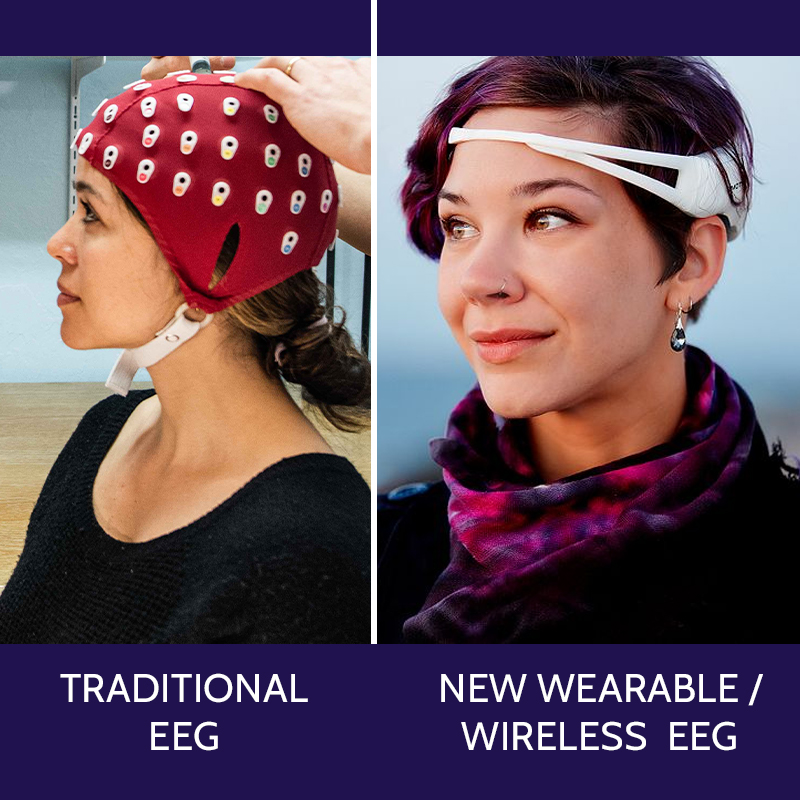Scientists from IONS recently published a book chapter on “Self-health Monitoring and Wearable Neurotechnologies” in the Handbook of Clinical Neurology. This blog includes excerpts from that chapter.
One of the tools that IONS has used to investigate the relationship between interconnectedness, extended human capacities, and transformation, innovation, and well-being — part of IONS guiding hypothesis — is innovative wearable EEG (electroencephalogram) technology. We’ve used EEG technology to record the electrical brain activity of participants in the IONS Discovery Lab and other IONS studies to assess differences in participants’ resting-state EEG activity before and after transformational retreats or workshops. We also investigated whether there are any correlations between the EEG data and other measures like well-being scores and performance on psychic tasks.
EEG is widely used by clinicians to diagnose brain disorders and by researchers to better understand how brain cells communicate. While the EEG systems used in laboratories and hospitals have the best signal quality, they are lengthy to set up and clean and are expensive. Recent advancements have led to cutting-edge wearable and mobile EEG systems that offer quick and practical EEG data solutions. Researchers can now study EEG in populations that were harder to recruit before (e.g. elderly, children) and new situations such as during sleep, exercise, or driving a car (Debener et al., 2012). Researchers can also record large amounts of data more easily showing trends in larger populations that are not possible to see with small groups (Hashemi et al., 2016; Kovacevic et al., 2015).
Other impactful new applications offered by these devices are their potential for brain computer interfaces (BCI). BCI is a direct interface between an individual’s brain activity and a digital device. For example, paralyzed patients can use BCI to communicate through a computer. Other groundbreaking clinical applications include early detection of abnormal brain activity, which can save people’s lives by intervening before serious symptoms appear (e.g. epilepsy, traumatic brain injury, ischemic stroke).
One limitation to these new wearable devices are all the uncontrollable factors in the environment that we can usually control in a laboratory experiment. These factors can make the data less usable. However, these obstacles are being overcome more quickly than we might have thought with the appearance of smart glasses (Vahabzadeh et al., 2018) and artificial intelligence to process the huge amount of information. Of course, as these technologies advance, we’ll need to address privacy protection to make sure the data stays private, anonymous, and used for the benefit of users. In the future, if the limitations of these technologies are overcome, they could be implemented via smart clothing or even within the brain if they become completely non-invasive and could allow us to control technologies in the environment at a distance in our daily lives.
As neurotechnology continues to evolve, it will become more and more integrated in our lives and will increase the kind of data that researchers can collect to further understand changes in one’s physiology and how that may be correlated with our experiences.
To learn more about wearable technologies, visit: “Self-health Monitoring and Wearable Neurotechnologies” in the Handbook of Clinical Neurology.
